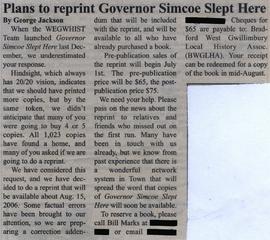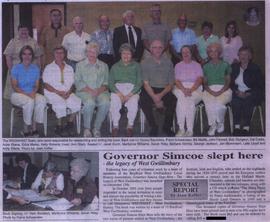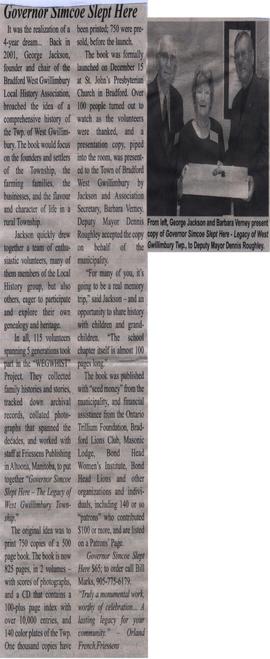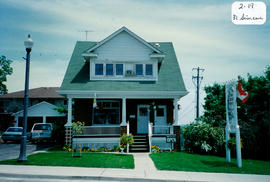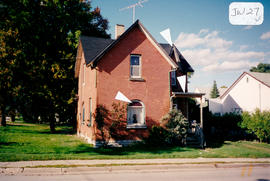Description : It was the realization of a 4-year dream... Back in 2001, George Jackson, founder and chair of the Bradford West Gwillimbury Local History Association, broached the idea of a comprehensive history of the Twp. of West Gwillimbury. The book would focus on the founders and settlers of the Township, the farming families, the businesses, and the flavour and character of life in a rural Township. Jackson quickly drew together a team of enthusiastic volunteers, many of them members of the Local History group, but also others, eager to participate and explore their own genealogy and heritage. In all, 115 volunteers spanning 5 generations took part in the "WEGWHIST" Project. They collected family histories and stories, tracked down archival records, collated photographs that spanned the decades, and worked with staff at Friessens Publishing in Altoona, Manitoba, to put together "Governor Simcoe Slept Here - The Legacy of West Gwillimbury Township." The original idea was to print 750 copies of a 500 page book. The book is now 825 pages, in 2 volumes - with scores of photographs, and a CD that contains a 100-plus page index with over 10,000 entries, and 140 color plates of the Twp. One thousand copies have been printed; 750 were pre-sold, before the launch. The book was formally launched on December 15 at St. John's Presbyterian Church in Bradford. Over 100 people turned out to watch as the volunteers were thanked, and a presentation copy, piped into the room, was presented to the Town of Bradford West Gwillimbury by Jackson and Association Secretary, Barbara Verney. Deputy Mayor Dennis Roughley accepted the copy on behalf of the municipality.


